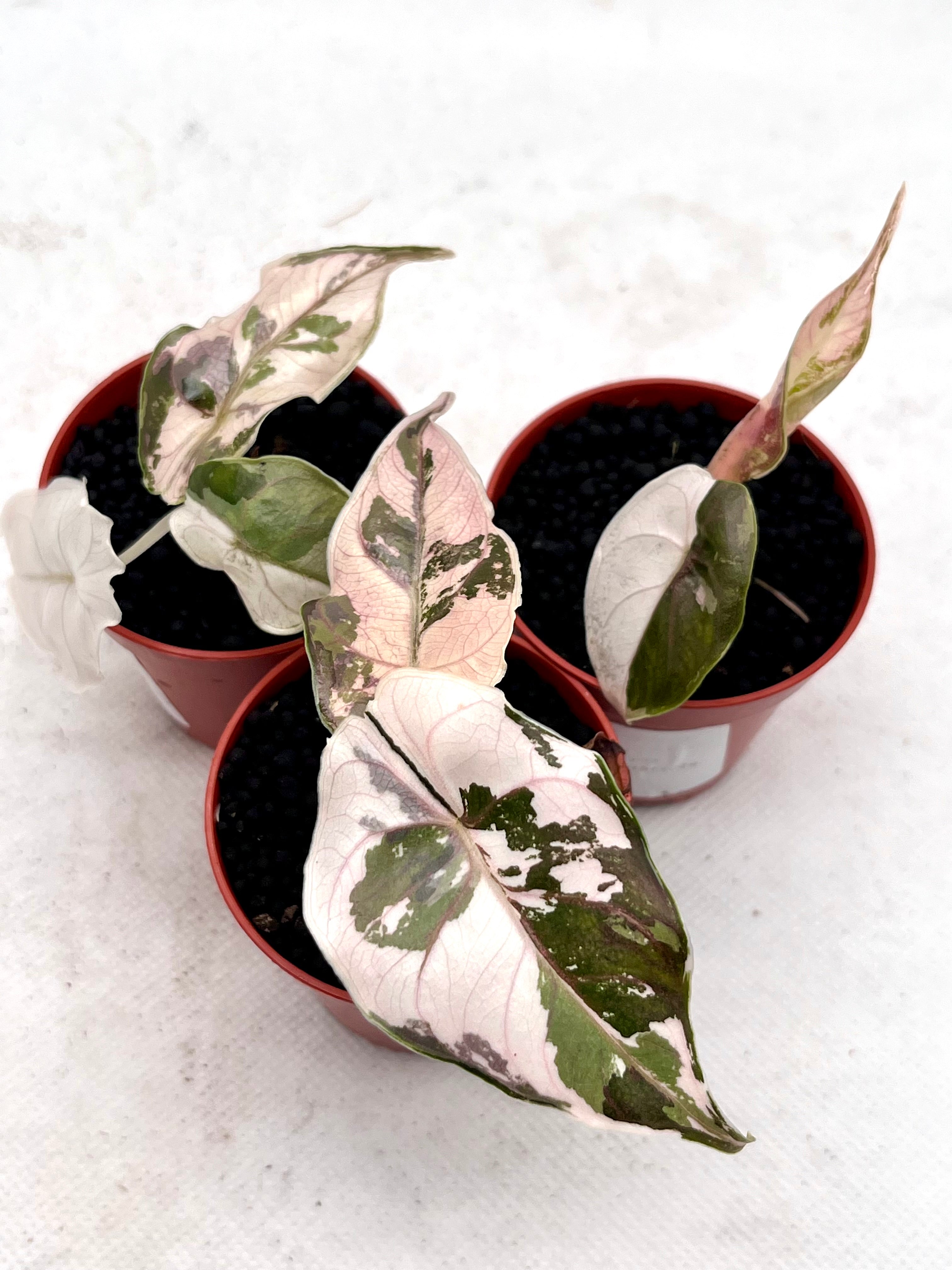
Alocasia
Location
A bright location with plenty of indirect light. Avoid direct sun—susceptible to leaf burn. They thrive in partial shade, but grow more slowly.
Care
Fertilize: During the growing season (spring–fall), every two weeks with a green plant fertilizer. Repot: Every one to two years in spring. Leaf care: Wipe off dust regularly with a damp cloth. Pruning: Cut off wilted or damaged leaves directly at the base.
temperature
Heat-loving: Ideally, 20–28°C. Avoid temperatures below 16°C. Avoid drafts and cold windowsills.
irrigation
Keep the soil evenly moist, but never wet. Waterlogging quickly leads to root rot. Only water when the top layer of soil is dry. Water less in winter.
humidity
Very high humidity is required: at least 60%, preferably 70–80%. Daily misting is recommended. A humidifier or humidity tray is highly recommended, especially in winter.
Additional tips
Alocasia prefer permeable soil (e.g. a mixture of houseplant soil, perlite and some coconut fiber) - suitable soil is available in our shop.
Plants may lose individual leaves if they are stressed (e.g. when moving or repotting) – this is normal.
Alocasias are highly toxic to pets and humans (contains
Calcium oxalate).
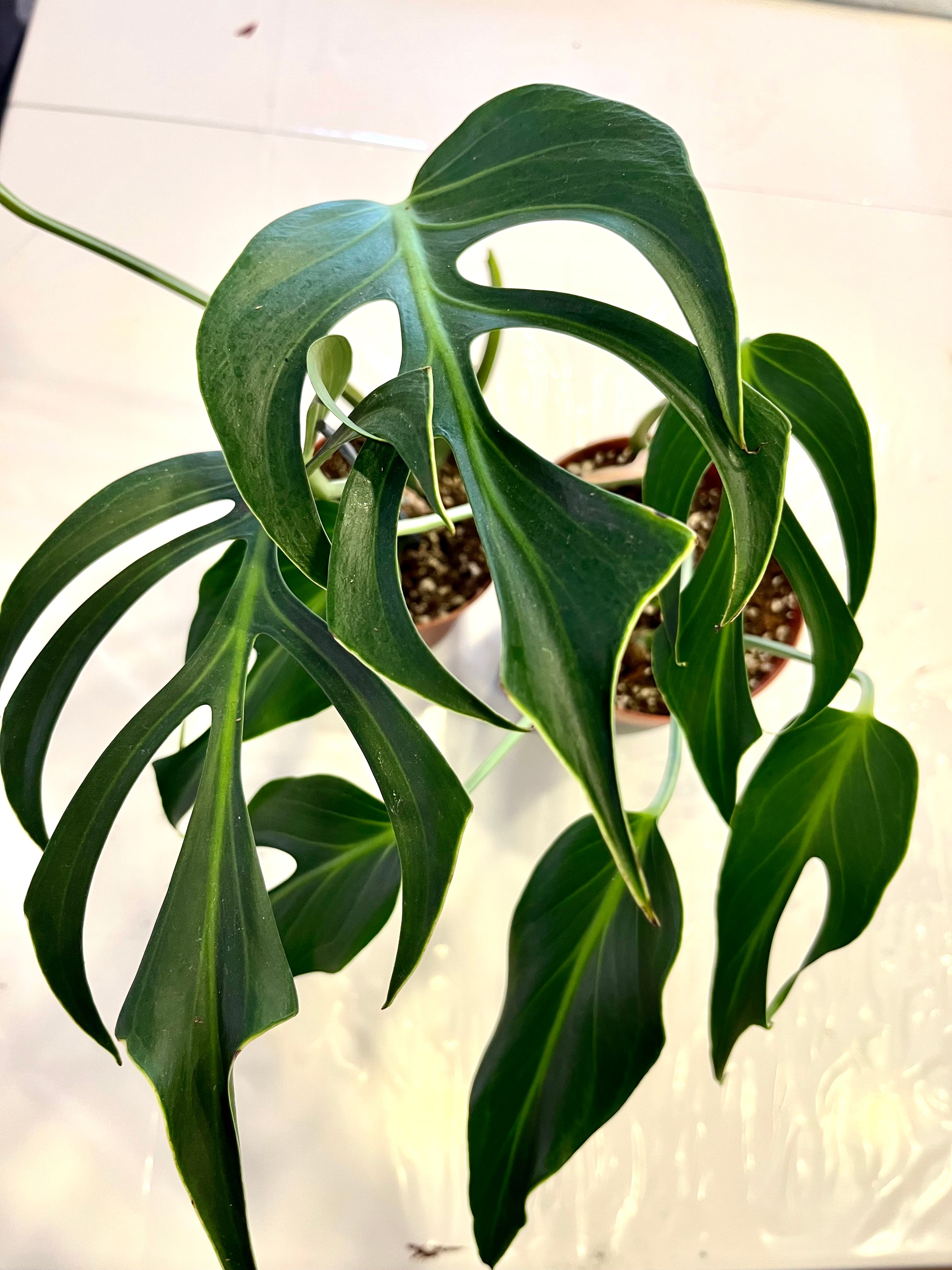
Monstera
Location
A bright location with plenty of indirect light. Direct sun in the morning or late afternoon is tolerated, but strong midday sun causes leaf scorch. The more light, the more pronounced the leaf fenestrations become.
Care
Fertilize: during the growing season (spring – autumn) every 2 weeks with a liquid green plant fertilizer (½ dosage).
Repotting: every 2–3 years or when the roots fill the pot.
Support: A moss or coconut stick promotes upright growth and larger leaves.
Leaf care: Wipe off dust with a damp cloth; occasionally shower with lukewarm water.
Pruning: Cut longer shoots above a node; cuttings root easily in water or moist soil.
temperature
Optimal room temperature is 20–30°C; at night, not below 15°C. The plant can tolerate temperatures down to approximately 12°C for short periods; below this, growth will stop and leaves will be damaged. Avoid drafts.
irrigation
Keep the substrate evenly moist: only water when the top 2–3 cm of soil is dry. Water thoroughly, draining excess water from the planter after 15 minutes. Water more sparingly in winter. Waterlogging → root rot; complete drying out → brown edges.
humidity
Ideally, 60% or more. In dry, heated air, mist daily, set up a humidifier, or place the pot on a tray filled with expanded clay and water. Brown leaf tips are often a sign of low humidity.
Additional tips
Use a well-drained soil (e.g. high-quality houseplant soil with 20% perlite or pine bark) - suitable soil is available in our shop.
Monstera plants are slightly toxic to pets; leaves and stems contain calcium oxalate.
Yellow leaves + wet soil ⇒ too much water. Yellow leaves + dry soil ⇒ lack of water or too much sun.
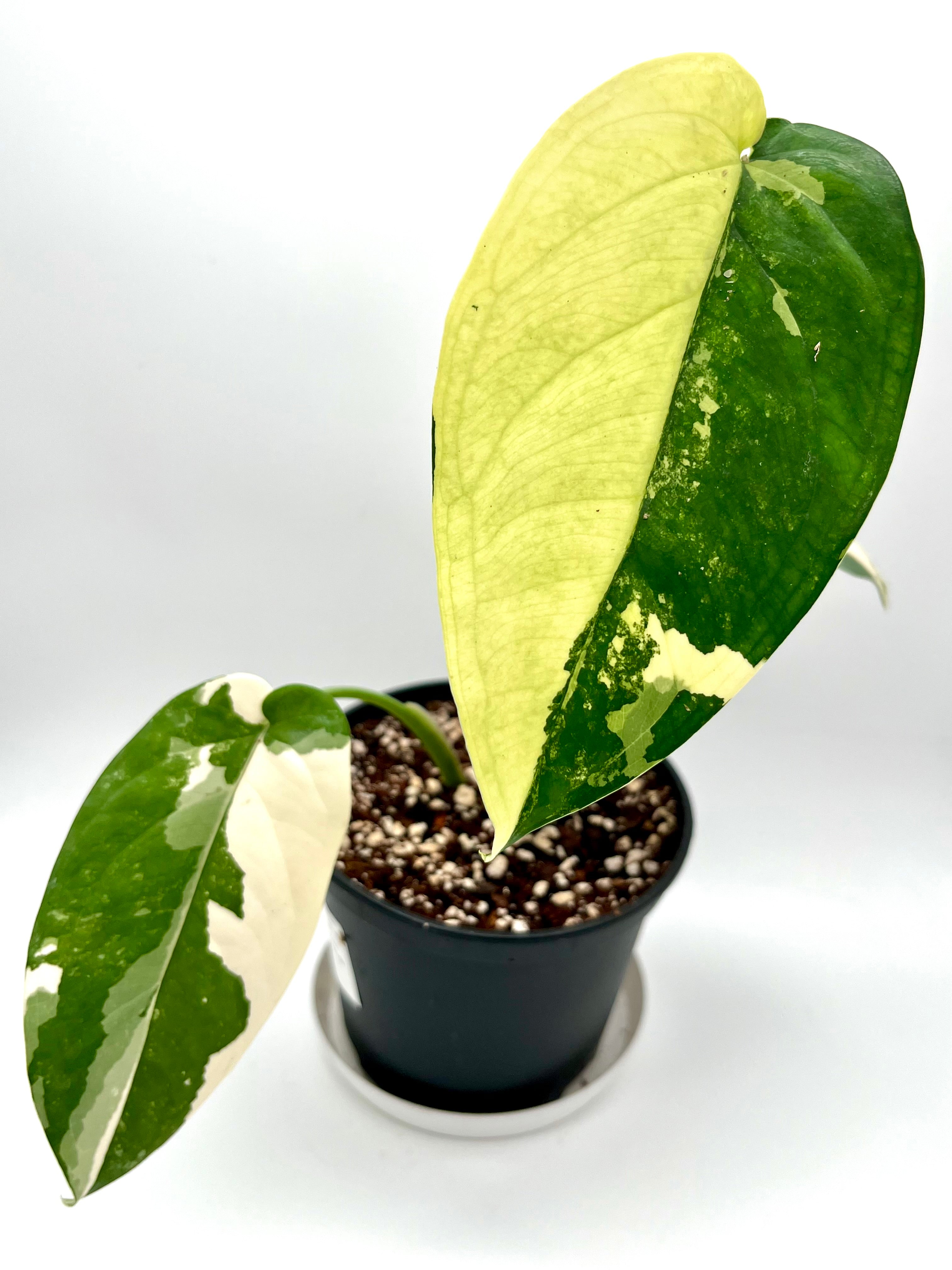
Syngonium
Location
A bright to partially shaded location without direct sunlight. The brighter the location (without direct sunlight), the more vibrant the leaf color. It also tolerates lower light, but grows more slowly.
Care
Fertilize: every 2 weeks during the growing season (spring – autumn) with green plant fertilizer.
Repotting: every 1–2 years in spring.
Pruning: Regular pruning promotes bushy growth.
Leaf care: Remove dust with a damp cloth. Do not use leaf polish.
temperature
Ideal temperatures are between 18 and 25 °C. Growth may stall below 15 °C. Avoid drafts.
irrigation
Keep the soil slightly moist. Allow it to dry out before watering again. Water less frequently in winter. Avoid waterlogging at all costs.
humidity
It likes high humidity (50–70%), but can also cope with normal room air. In very dry conditions, mist occasionally or use a humidity tray.
Additional tips
Syngoniums are ideal hanging or climbing plants – provide support if necessary.
Slightly toxic to pets and humans – not suitable for consumption.
Substrate: loose, well-drained soil (e.g., houseplant soil with perlite or coconut fiber) – suitable soil is available in our shop.
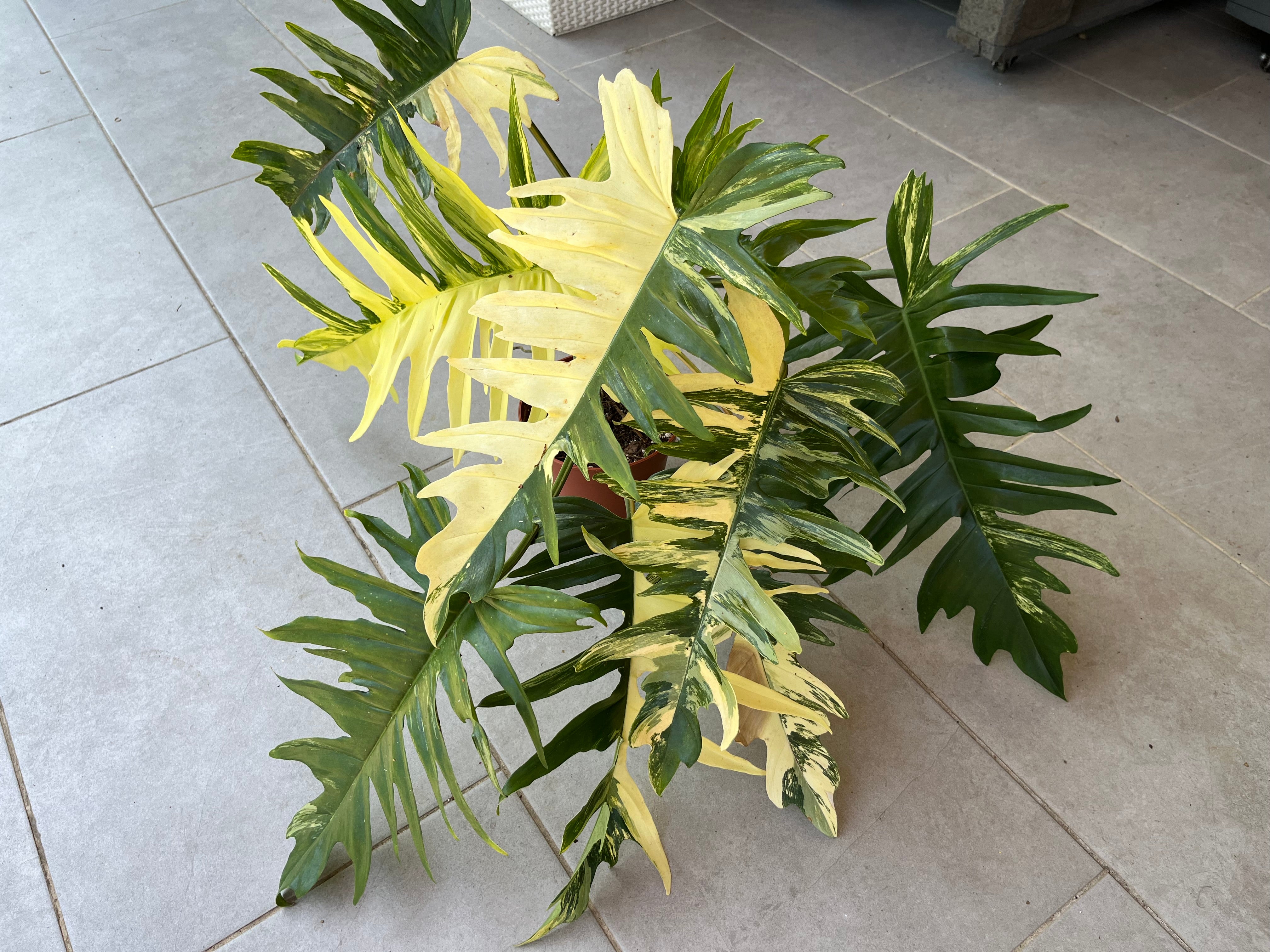
Philodendron
Location
A bright to partially shaded spot with plenty of indirect light. Avoid direct sunlight, as this can cause leaf burn. Some species also thrive in lower light.
Care
Fertilize: every 2–4 weeks during the growth period (spring – autumn) with liquid green plant fertilizer.
Repotting: every 2 years or when the pot is fully rooted.
Climbing: Many species like to grow on moss or coconut sticks.
Leaf care: Remove dust with a damp cloth. Do not use leaf polishes.
use.
temperature
The ideal temperature is 18–28°C. Avoid temperatures below 15°C. Protect from drafts.
irrigation
Keep the soil slightly moist, allowing it to dry out between waterings. Water when the top 2–3 cm of soil is dry. Avoid waterlogging, as this can cause root rot.
humidity
Prefers high humidity (50–70%). Can cope with normal room air; spray occasionally in dry, heated air.
Additional tips
Philodendrons are easy to care for and ideal for beginners.
Substrate should be well-drained (e.g. loose houseplant soil with some perlite or bark) - suitable soil is available in our shop.
Philodendron is toxic to pets and humans – avoid contact with plant sap.
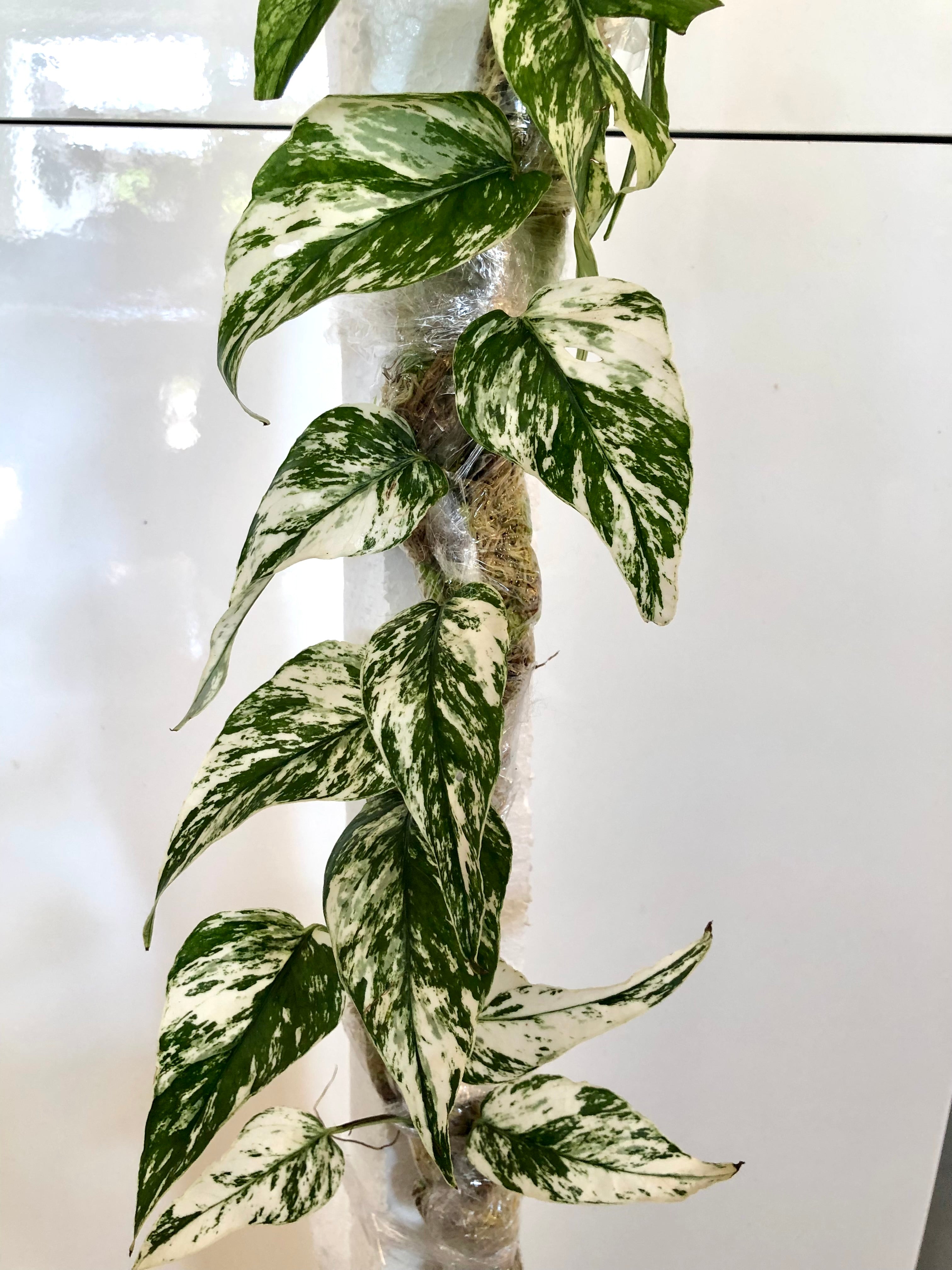
Epipremnum
Location
A bright to partially shaded location, no direct sunlight. It can also tolerate low light, but the leaf markings will fade. Ideal: an east- or west-facing window.
Care
Fertilize: every 2–4 weeks from spring to autumn with liquid fertilizer for green plants.
Repotting: every 1–2 years in spring.
Pruning: Promotes branching—ideal for dense hanging or climbing forms. Leaf care: Dust with a damp cloth.
temperature
Optimal temperature is 18–27°C. Temperatures should not fall below 15°C, otherwise growth will stop. Avoid drafts and cold feet.
irrigation
Keep evenly moist, but only water when the top layer of soil is dry. Water more sparingly in winter. Avoid waterlogging – risk of root rot.
humidity
It tolerates normal room air, but prefers 50–60% humidity. Occasional misting has a positive effect on the foliage.
Additional tips
Very easy-care plant, ideal for beginners.
Highly air purifying according to NASA study.
Slightly toxic if consumed (contains calcium oxalate) – keep away from pets and small children.
Substrate: well-drained soil, e.g., houseplant soil with some perlite or expanded clay—suitable soil is available in our shop.
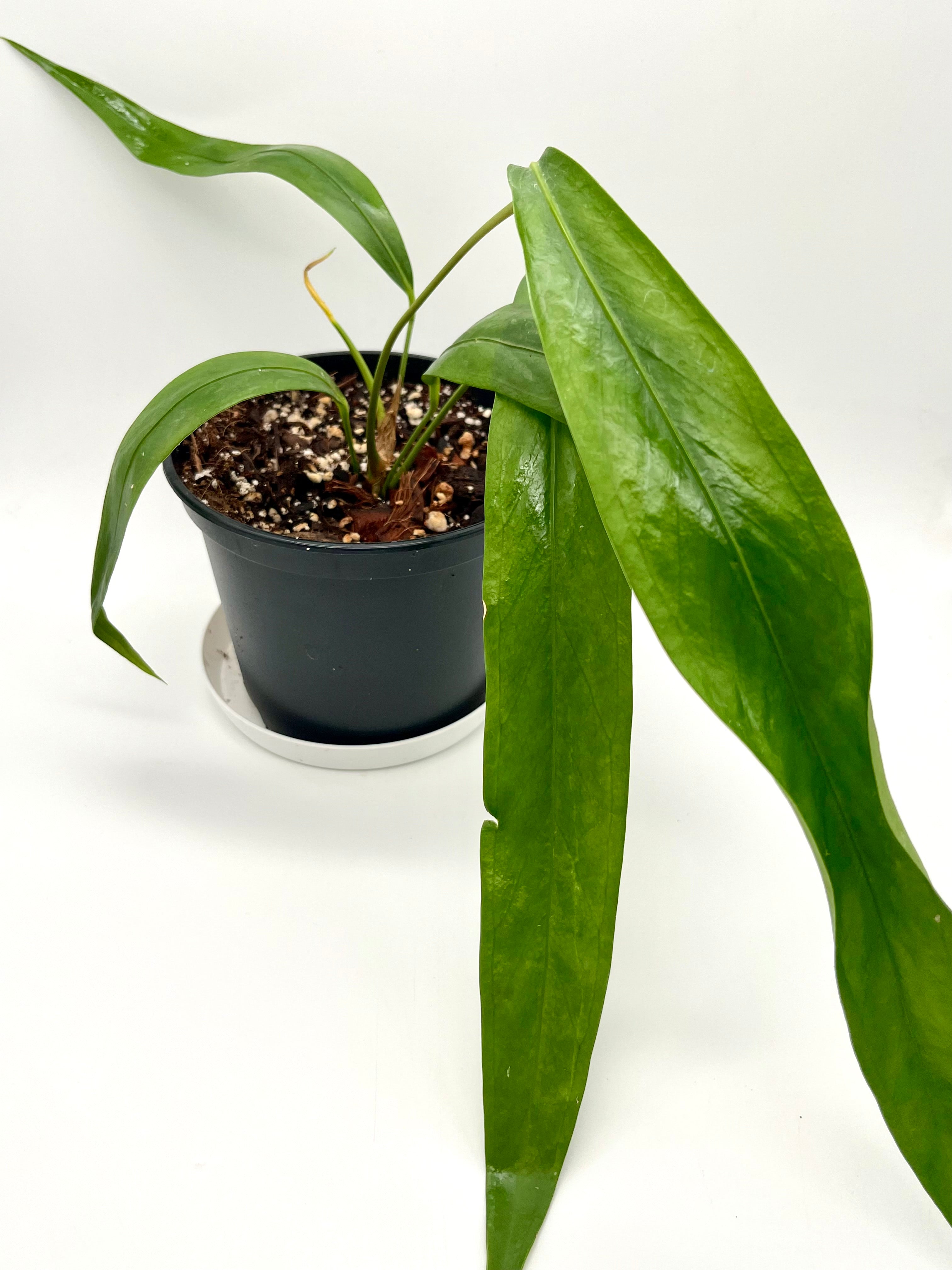
Anthurium
Location
A bright location out of direct sunlight. Indirect light promotes flowering and growth. If the light is too low, the plant will remain green but will bloom little or not at all.
Care
Fertilize: Every 4–6 weeks during the growing season (spring – autumn) with half the dosage of flowering plant fertilizer.
Repotting: every 2–3 years in spring. Clean leaves occasionally with a damp cloth; do not use leaf polish.
temperature
Temperatures between 20 and 25 °C are optimal. Avoid temperatures below 15 °C. Drafts and strong temperature fluctuations are unfavorable.
irrigation
Keep the soil evenly moist. Only water when the top layer of soil has dried out. Avoid waterlogging at all costs. Water less in winter.
humidity
Loves high humidity (over 60%). Spray regularly with lime-free water or use a humidity tray. It also thrives in normal room air.
Additional tips
Anthuriums are slightly poisonous and not suitable for consumption.
Ideal: permeable substrate (e.g. mixture of potting soil, orchid soil, pine bark or coconut fiber) - suitable soil is available in our shop.
Use a pot with drainage holes to avoid waterlogging.
Do not choose a location that is too cool in winter (not directly on the windowsill when temperatures outside are below zero).
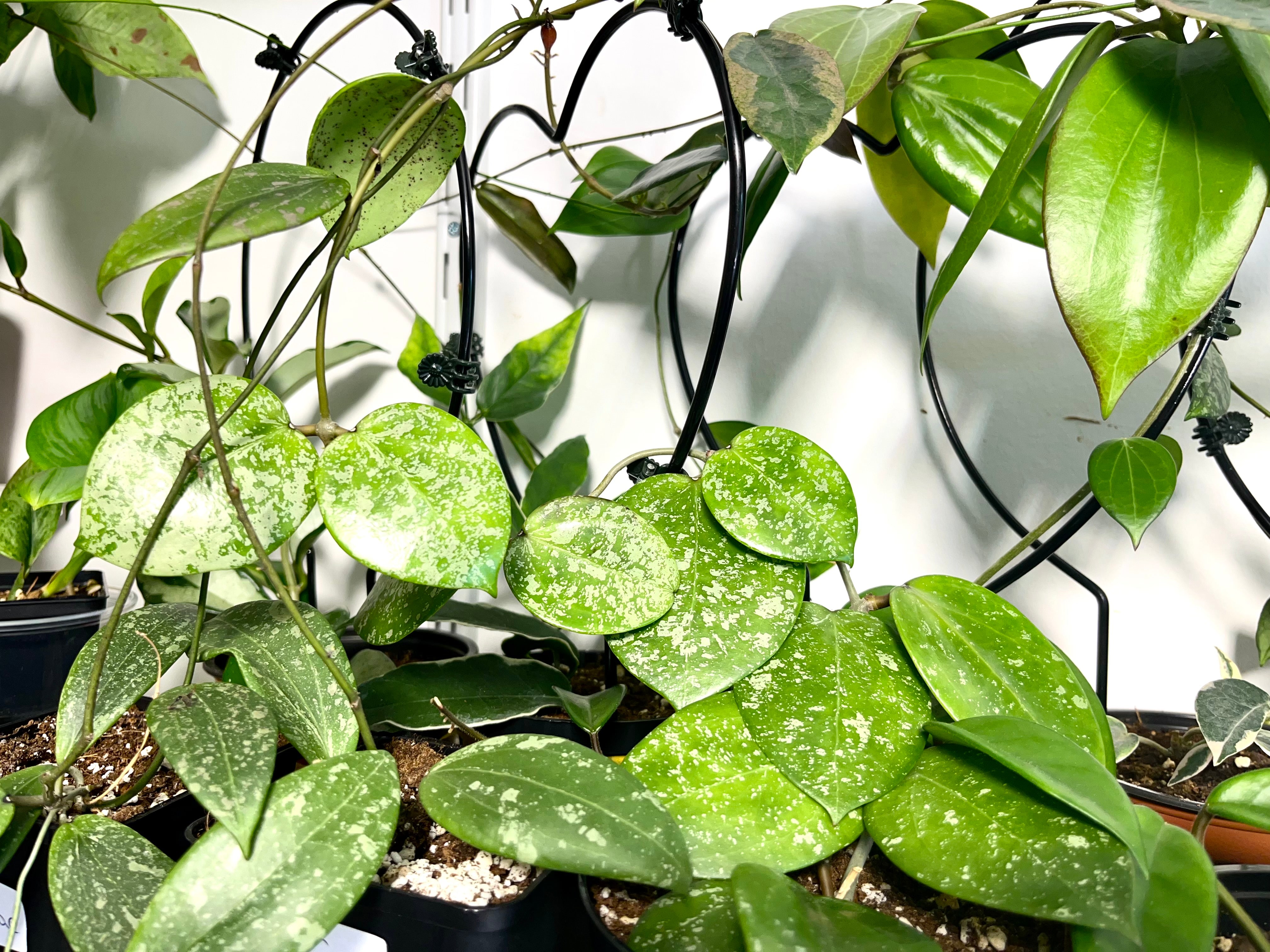
Hoya
Location
A bright location with plenty of indirect light. It also tolerates some direct sun, especially in the morning or evening. Too little light will impair flowering.
Care
Fertilizing: During the growing season (spring – autumn) every 4 weeks with a liquid fertilizer for flowering plants.
Repotting: Only when necessary, as Hoyas prefer tight pots. Clean leaves occasionally with a damp cloth. Do not use leaf polish.
temperature
Ideal temperatures are between 18 and 25 °C. The plant does not tolerate temperatures below 12 °C. Avoid drafts, especially in winter.
irrigation
Water moderately. Only water when the top layer of soil is dry. Hoya prefers a slightly drier environment than too wet. Water sparingly in winter. Avoid waterlogging.
humidity
It tolerates normal room air, but prefers slightly elevated humidity. Occasional misting promotes well-being and flowering.
Additional tips
Hoya only blooms on old shoots – do not cut off faded flower stems!
A trellis or hanging basket is ideal.
Use a well-drained substrate, e.g., a mixture of cactus soil, orchid soil, and some perlite—suitable soil is available in our shop.
Be patient when flowering – it can take several years, but you will be rewarded with intensely fragrant flowers.
